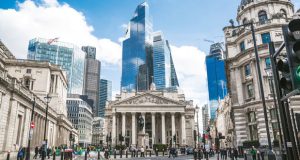 By George Adams, Director of Energy and Engineering, SPIE UK
By George Adams, Director of Energy and Engineering, SPIE UK
Ahead of last year’s COP26 climate conference in Glasgow and the signing of the Climate Pact, the UK government launched its flagship Net Zero Strategy to move forward on its approach to meeting global emissions targets. As COP27 approaches, evidence of tangible progress on carbon reduction and renewable energy achievements will be sought.
To do its part, the built environment must now apply similar levels of scrutiny when it comes to tracking and managing progress on net zero sustainability efforts. So how far have we really come?
Progress on UK net zero
The UK is one of a few nations having emissions targets aligned with the long-term temperature strategy of the Paris Agreement. In addition, policy ambition has moved substantially with the UK’s Net Zero Strategy. In most areas, these ambitions are credible, and in line with the required pace and scale of change. It is now time to deliver the promised action.
Earlier this year, the Climate Change Committee (CCC), an independent, statutory body that advises the UK government on climate change published a report focusing on progress towards net zero goals which presents sobering reading. The report highlights major failures in delivery programmes towards the achievement of the UK’s climate goals. Being that the UK legislated to achieve net zero carbon emissions across the economy by 2050, the case for a sound policy framework for the decarbonising of buildings is absolute; all buildings, cars, and industries – must be zero carbon in aggregate by 2050.
The CCC recommends that plans for decarbonising buildings need to be strengthened and accelerated. The built environment is approaching half of global carbon emissions, far higher than any other individual sector. According to UK Green Building Council (UKGBC), the UK built environment is currently responsible for 25 per cent of total UK greenhouse gas emissions including buildings and infrastructure. If surface transport or vehicle emissions is included within the scope of the built environment, the total share of UK emissions increases to 42 per cent.
There has been no sustained reduction in emissions from buildings in the last decade reflecting low levels of annual home energy efficiency improvements.
Hard engineering solutions can play a vital role in helping mitigate climate change, particularly where buildings are concerned. Recycling materials and retrofitting buildings for different uses over time would drastically cut the emissions from materials production. Where new buildings are necessary to meet population growth, decision makers should minimise the number of materials used, recycling and repurposing materials and existing infrastructure to work at a zero operational carbon cost. Adding the fact that 80 per cent of buildings standing today will still be in use by 2050, we must prioritise the adaptation of existing buildings to future proof homes, offices and the built environment as a whole to cope with increases in urban climate conditions.
Leadership, legislation and sourcing sustainable resources
Legislation will play a critical role in moving the sector to net zero. The actions from the Grenfell Tower enquiry are a clear model in this respect. Through a collaborative effort, we can increase the role that buildings and cities can play in addressing the climate crisis and highlighting the solutions available. When coupled with clean energy sources, we can produce low energy and low carbon buildings with existing technology and materials.
The Glasgow Climate Pact emphasises the urgent need for action and support to developing countries in adapting to climate change, and this is particularly important when it comes to sourcing the raw materials required for sustainable engineering. In order to future-proof both existing buildings and new builds combined where sustainability is concerned, we need to consider “where” and “how” these materials were sourced and produced, and how they should be utilised fairly. Supply chains should be scrutinised carefully to avoid further burdening developing countries and the environment, and sustainable energy and natural resources incorporated as much as possible into manufacturing processes.
The CCC’s Progress Report clearly emphasises that the built environment sector needs to accelerate its efforts to successfully support our urban environments throughout the climate transition. There is no time to waste, and we must act now as industry to meet 2050’s climate goals and to fulfil Glasgow’s promise.




